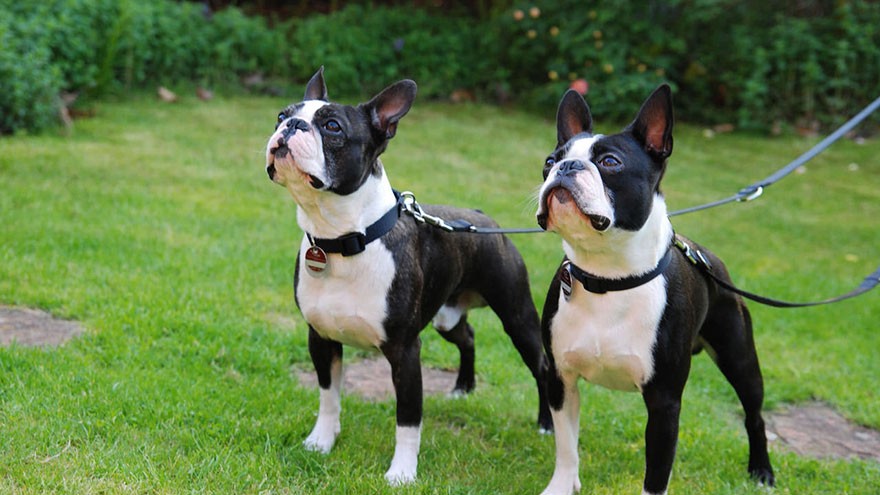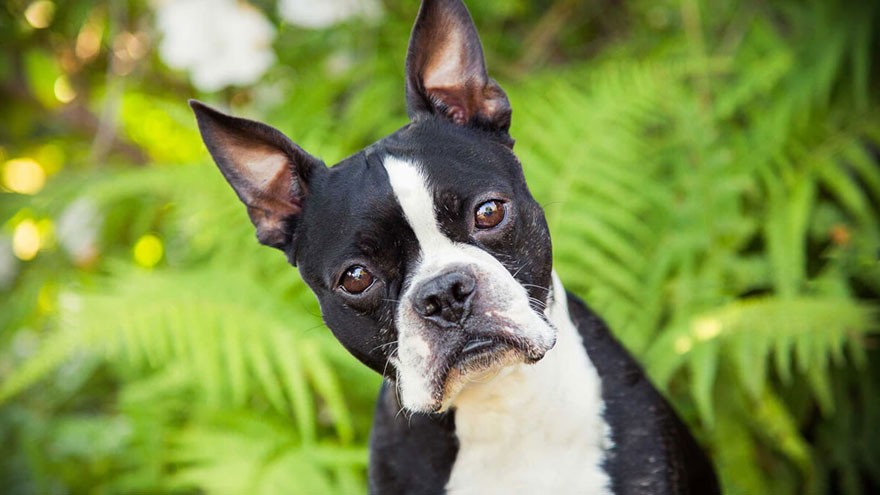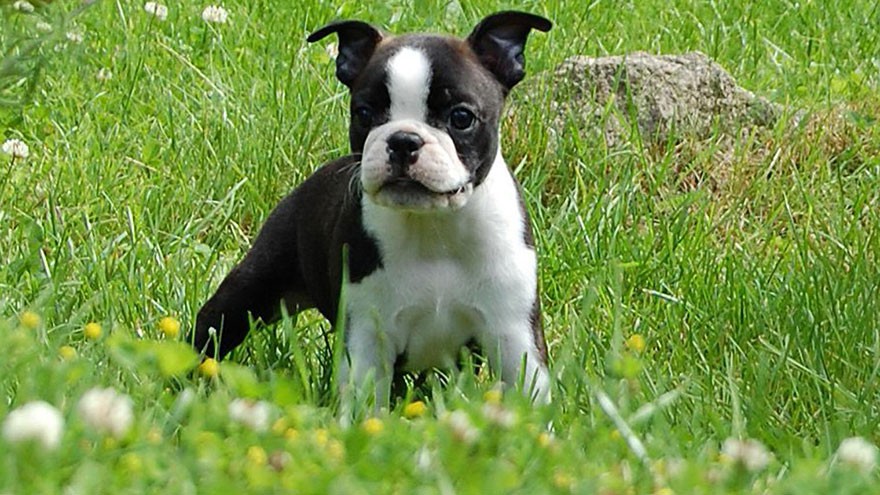Boston Terrier Breed Information
This small breed dog is built with small, erect ears, short tails, and a stout, short muzzle. The Boston Terrier originated in the late 19th century. Originally, the breed was actually called a Hooper’s Judge, which was a breed of English White Terrier and English Bulldog. The original breed was around 30 pounds but as new breeding took place, the Boston Terrier ended up being larger, weighing in around 45 pounds.
The Boston Terrier was a favorite breed in Boston and by 1889, the American Bull Terrier Club was organized. It was just a few years after this that the name was officially changed to “Boston Terrier”, which is what we know the breed as today. Then in 1893, the Boston Terrier was admitted into the American Kennel Club, being the first non-sporting dog in the United States.
During early breeding years, this breed had various colors and markings, which were considered of little to no importance. However, in the early 20th century, very specific colors and markings were deemed the standard, actually becoming a vital part of the breed’s acceptance. Although the Boston Terrier was mischievous and somewhat unruly in its early years, today we see a well-behaved dog that is fun, loving, and comical in nature.
Boston Terrier Temperament

Keep in mind that the Boston Terrier was actually bred for fighting originally but over the years, this breed was bred down to a gentle, companion dog that remains highly popular today. In fact, most Boston Terrier’s are very gentle and well behaved. You would likely notice a little bit of mischievous behavior but nothing out of line. Although the Boston Terrier is a great, single dog, they also enjoy the company of another Boston Terrier.
The nice thing about this particular breed is that while the breed is alert, making a great watchdog, it is not an obnoxious barker. Typically, this breed will only bark when someone comes to the door or it sees passersby in front of the home. Since this dog has been bred down specifically to be a companion, it is a great choice for homes with children, and other pets to include birds, dogs, cats, etc. The key is to socialize the puppy while young, teaching it to be independent but also loving and calm.
Boston Terrier Size and Color

The Boston Terrier is a small, compact breed that again, has erect ears, a short muzzle, and short tail. You will find Boston Terriers as small as 10 pounds although they can weigh as much as 25 pounds. As far as height, this breed typically stands between 15 and 17 inches at the withers.
For coloring, remember that originally, color and markings were considered unimportant. However, today you would expect to see the Boston Terrier with white markings on a brindle, black, or seal-colored body. Keep in mind that the Boston Terrier can have all three body colors with white markings as well. Although all three, body colors are beautiful, the standard is the seal, which is black with soft red highlights.
If you were interested in showing a Boston Terrier, you want to choose a puppy that has white markings that covers the chest and muzzle, as well as a band that goes around the neck. Additionally, the white should go up 50% of the forelegs, on the back legs but only to the hocks, and then a beautiful white blaze on the face between the eyes but this should never be touching the eyes.
Keep in mind that specifically with the Boston Terrier for show, you want symmetrical markings. While this is not mandatory, it is preferred. The key is looking for a dog that looks as if it were wearing a clean, crisp tuxedo. The white markings on the body make the dog look refined and very gentlemanly, which is the crux of the Boston Terrier. Depending on the dog’s ancestry, you would expect to see some variation in color and markings.
Boston Terrier Feeding and Grooming Requirements

The key to feeding Boston Terriers, as well as other dog breeds is that even some of the top dog foods have formulas changed. When this happens, dogs may not do well with the new food. Therefore, you should feed your Boston Terrier food that you trust and pay attention to the formula. If you notice something has changed, you might expect some problems with diarrhea and/or vomiting. A better solution for your Boston Terrier is homemade food.
Keep in mind that this breed in particular needs extremely high levels of protein and fat in order to maintain a healthy body, specifically for show. If you decide to use store bought food, look for formulas with 30% protein and 20% fat or create your own formula using this balance. Another important tip associated with feeding a Boston Terrier is that many will have allergic reaction to anything containing brewer’s yeast, which would include some lamb and chicken-based foods. Just stick with high quality, dry food.
For grooming, you can expect some shedding although not much. This dog has a smooth, short coat that typically needs just an occasional brushing. In other words, working with a firm bristle brush, you would need to brush the Boston Terrier about three times per week. In addition, make sure this dog’s face is washed with a damp cloth daily and that the nails are clipped when needed.
Boston Terrier Exercise Needs

This breed of dog loves playtime. However, when it comes to actual exercise, only moderate activity is required. While you could take the Boston Terrier for a long walk, it is not necessary. Typically, a short walk a few times a week would suffice.
For the Boston Terrier, the main goal is making sure it has a good companion since this breed needs lots of love and affection. Remember, this dog was down bred to be a companion dog so it needs human contact. You would not want to keep the Boston Terrier outside although time spent playing, exercising, and training is a good idea.
Read More About Boston Terrier
- Boston Terrier : 10 Most Common Questions
- Boston Terrier Training Guide
- Boston Terrier Health Guide
- Owning a Boston Terrier : Breeder Recommendations

